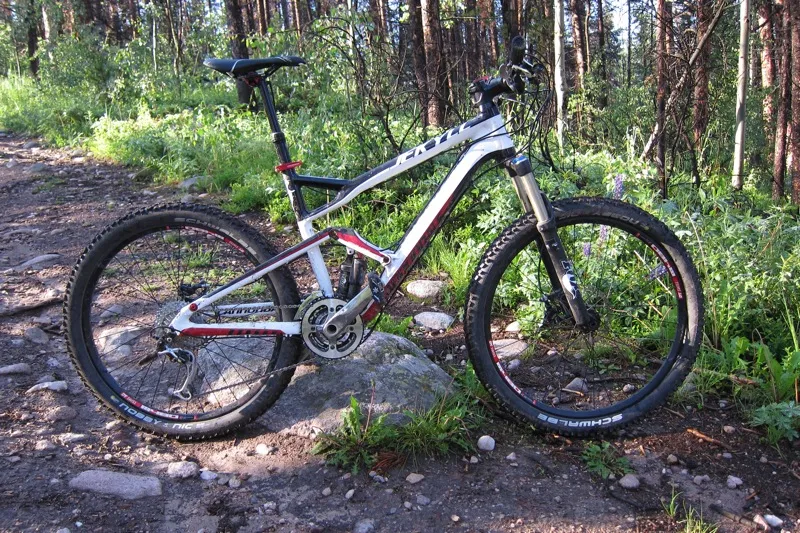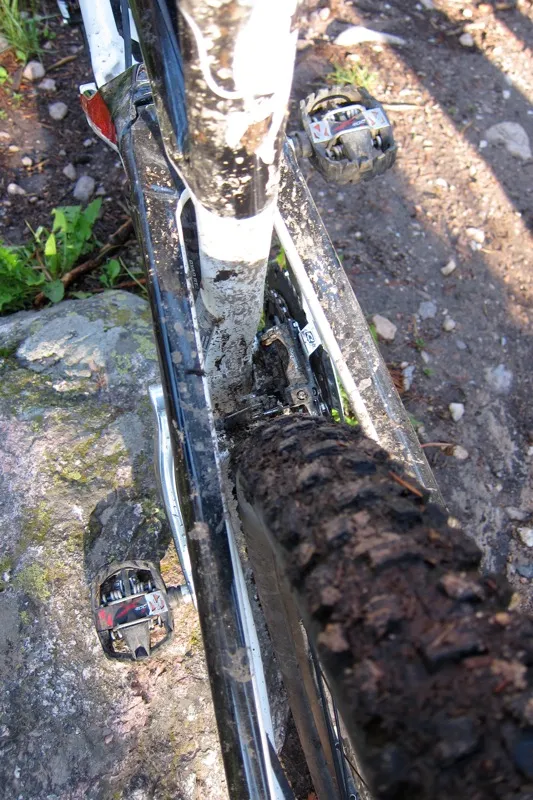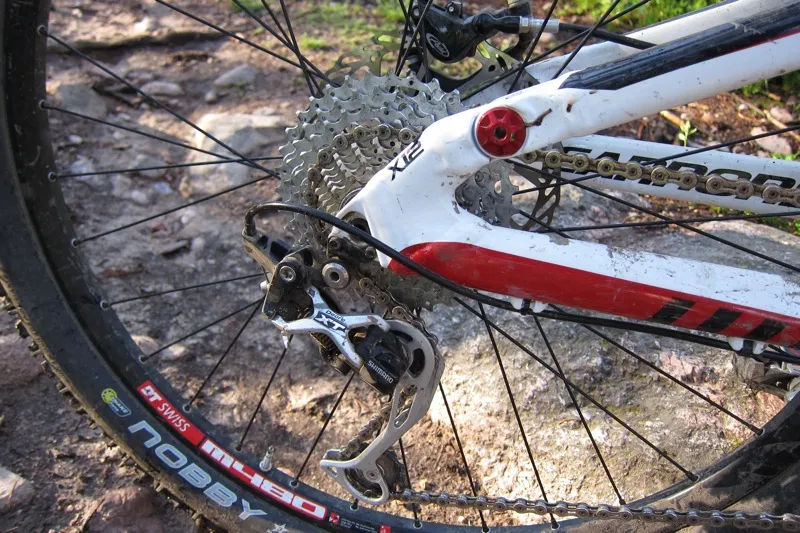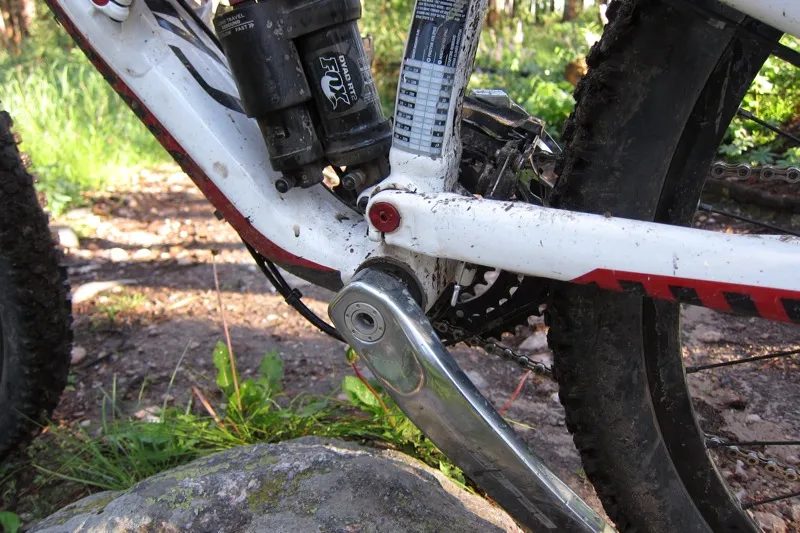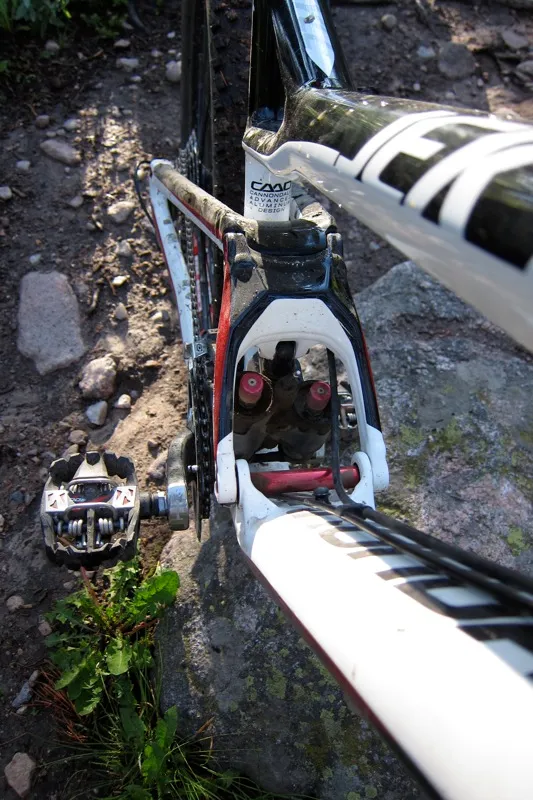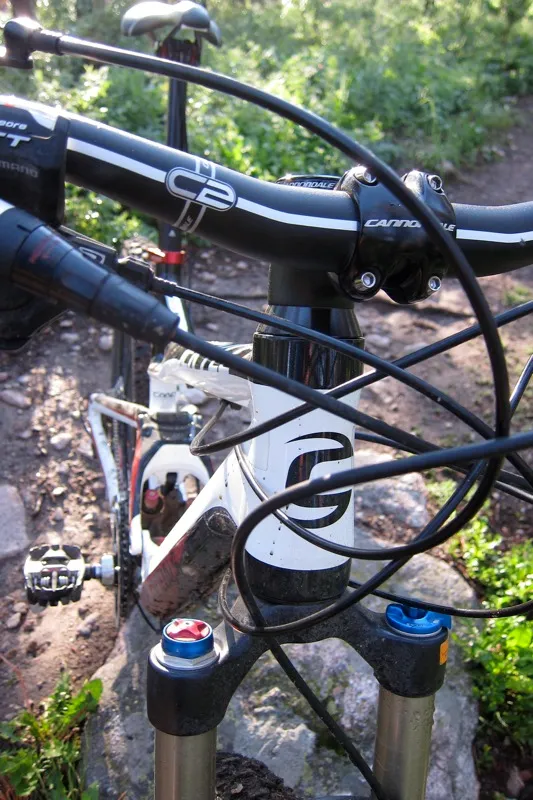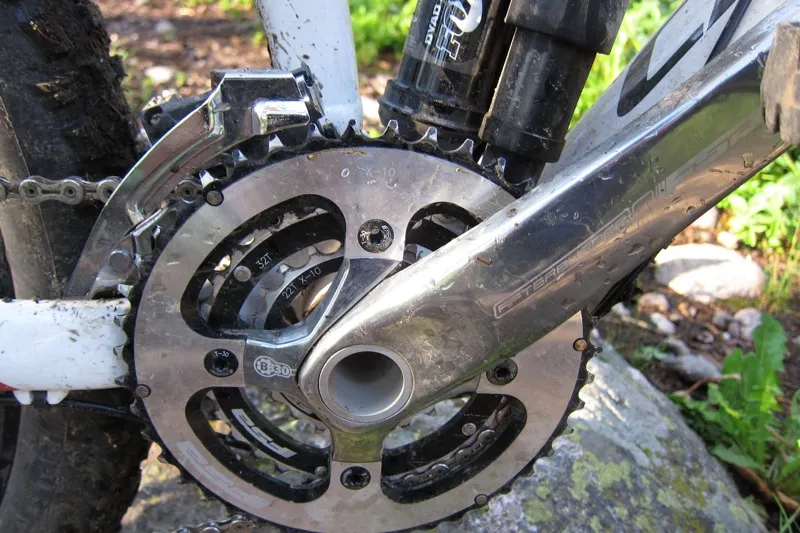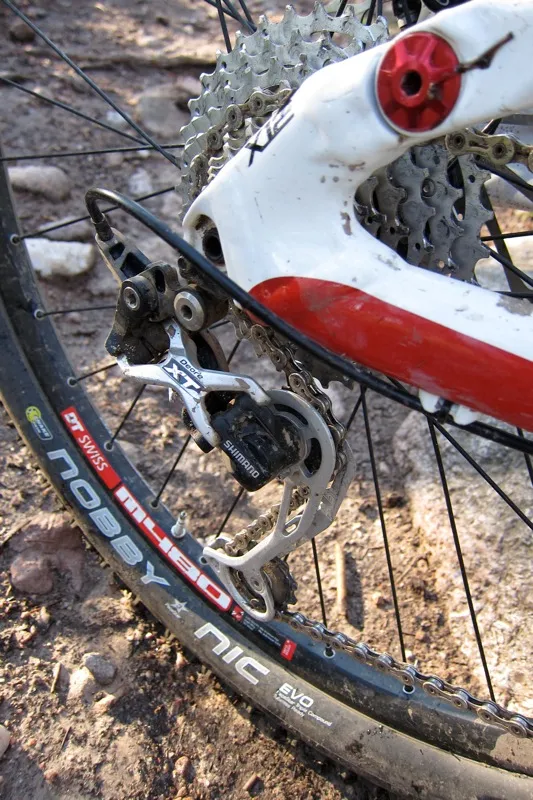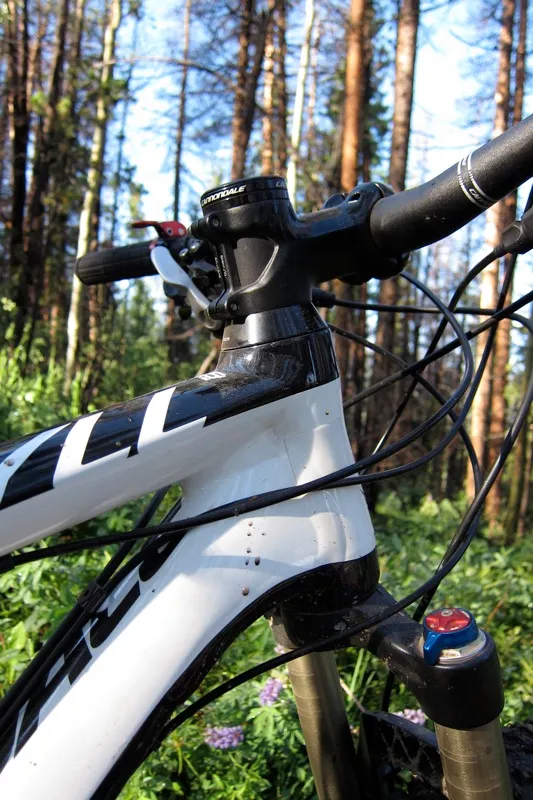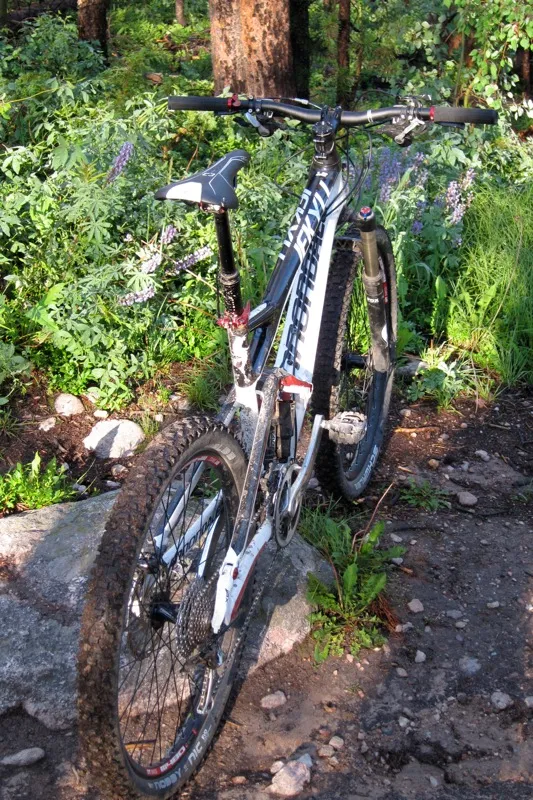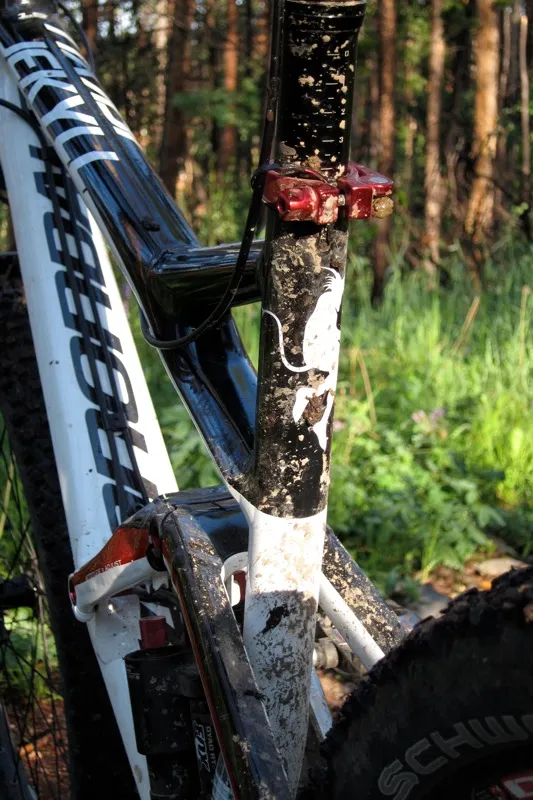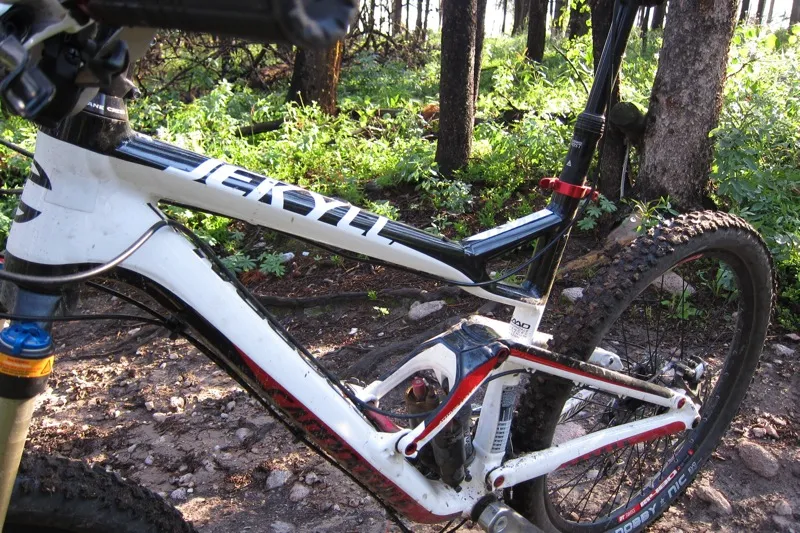Jekyll is the perfect name for this bike as it really has two distinct personalities. With the Fox Racing Shox made Dyad RT2 shock and its remote travel-adjust lever, the rider is able to toggle between a 150mm open ‘flow’ setting and a pedaling friendly 90mm ‘elevate’ mode. This also modifies the salient features of bottom bracket height – by 1cm – and head tube angle – by 1° – giving true meaning to Cannondale’s claim of two bikes in one.
We've ridden our alloy Jekyll 3 in just about every condition, from straight cross-country to bikeparks, and even done some beginner dirt jumping on it. Throughout our testing the Cannondale allowed us to always have fun, which is a serious accomplishment for any bike.
We can wholeheartedly recommend the Jekyll platform – but not the Jekyll 3 specification tested here. That's because you can pick up the carbon fiber Jekyll 2 for just US$200 more, saving a couple of pounds (via the upgraded frame and spec) in the process and addressing one of our main criticisms of the bike – its weight.
Ride & handling: Truly two bikes in one
The Jekyll's Dyad RT2 shock and linkage ratio do a very good job of providing both quality suspension travel and a feeling of efficiency in both travel modes. In the ‘flow’ mode, the suspension feels active and very well tuned throughout the stroke. We never found it to wallow or want more support mid-stroke, it's reasonably supple for high-frequency trail noise and ramps up progressively to handle big hits without bottoming.
In terms of ride feel, the Jekyll skews toward efficiency in both modes. The 'flow' mode feels both bottomless and progressive at the same time, but there are definitely bikes out there that feel more supple, especially over high-frequency chatter and sharp edged hits. Once pointed down, we found the bike to be up for some pretty rowdy terrain – to the point where the trails we were riding made us want for pads and a full-face helmet.
We rode the lift-served trails at SolVista Bike Park in Colorado and while the Jekyll felt a little out of its depth on some of the intermediate-level downhill tracks – perfectly reasonable considering the bike’s intended ‘trail’ purpose – we had about as much fun as humanly possible on a machine-built trail named Silky Johnson, which is rife with jumps from top to bottom and an absolute hoot.
When headed in the opposite direction – up – the ‘elevate’ mode performs just about perfectly when climbing or motoring along on rolling cross-country terrain, even with moderate bumps present. The shorter travel, higher bottom bracket and steeper head tube – made steeper still by dropping the fork using its TALAS adjustment – change the Jekyll's handling to mirror that of a cross-country bike.
Don’t get us wrong, the Jekyll is no World Cup racer on the climbs, but it has a much better feel than other bikes in the 150mm category – taller, firmer and seemingly more efficient. It's still slow going up, though, due to its 30lb-plus weight and heavy wheelset.
We also tried the 'elevate' mode on the dirt jumps at Colorado's new Valmont Bike Park, where we found it made the bike efficient enough to pump, but with the safety net of suspension. In fact, it's this efficiency that's one of the Jekyll's key attributes – it's a great pedaler, in fact, better than many full-on cross-country full-suspension bikes.
Our biggest gripe with the two-stage system is the bar mounted travel-adjust lever. Using your thumb to activate the 'elevate' mode is easy enough but releasing it back to the flow mode is much harder than we'd like. Because of the lever's orientation in the 'elevate' mode, we sometimes had to take our whole hand off the bar to operate it, which is unacceptable.
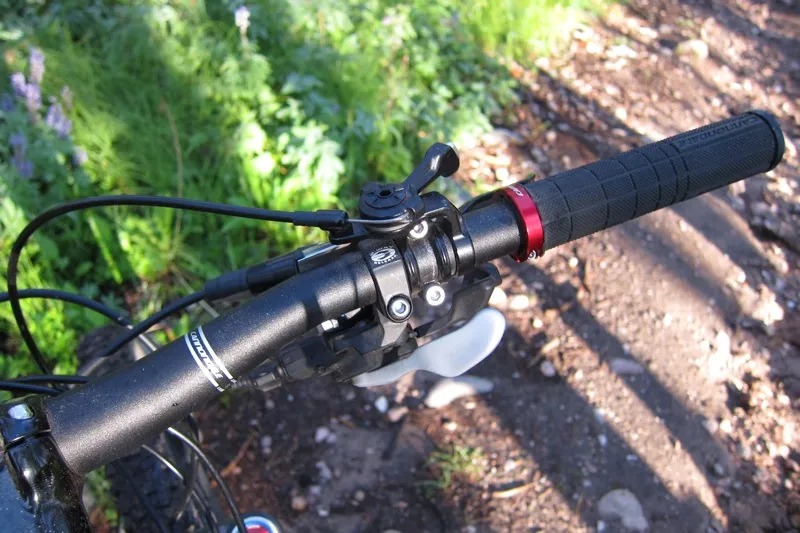
The 'elevate' mode's forward lever position is almost impossible to manipulate using a thumb
We’d love to see a redesign for 2012 but Cannondale's mountain product manager Johs Huseby says this won't happen. Cannondale engineers are, however, working on more efficiently routing the lockout's cable, with the goal of reducing friction and bettering its overall operation. “[Your experience is] odd,” Huseby told BikeRadar. “We’ve had ones whose cables have gotten gummed up, but not the lever. On my personal bike I use a Gore cable and it works really well.”
Other drawbacks to the Dyad damper include its proprietary nature and the fact it requires a special pump to reach the higher pressures it operates at – generally between 200 and 400psi.
Frame: Super-solid, but with a trademark creak
If the Dyad RT2 shock defines the way the Jekyll pedals in its two modes, the frame serves as the core for all of its handling attributes – stability, stiffness and maneuverability. There are four features worth mentioning: the straight 1.5in head tube; the BB30 bottom bracket with ISCG03 tabs; the ECS-TC (Enhanced Center-Stiffness, Torsion Control) linkage system with a massive welded linkage and 15mm externally clamped axles; and finally, the X-12 142mm through-axle rear end. All of these influence one key feature – the 7.31lb/3.32kg frame's overall stiffness.
The above features produce a very stable feeling chassis – a feeling which is furthered by the 67.8° head angle (static) and 44.5in wheelbase of our medium tester. Steering inputs are met by an immediate reaction from the bike, and overall control is excellent. In fact, the Jekyll is one of the most comfortable bikes we’ve ever drifted around on – a notable feature considering Cannondale have just hired Mark Weir, who’s known for this style, to highlight its prowess. We found ourselves sliding on it comfortably, and with a better ability to stay calm during said slide.
We're pleased to see ISCG03 tabs on the Jekyll – chain guides are something that many manufacturers in this category have overlooked this season. While we’re on board with the 12x142mm rear through-axle standard, we’re disappointed that Cannondale have equipped the Jekyll with Syntace’s X-12 tooled version. There are at least two (yes, we know there are more) good options for 12x142mm quick-release axles out there and they should have picked from that pool.
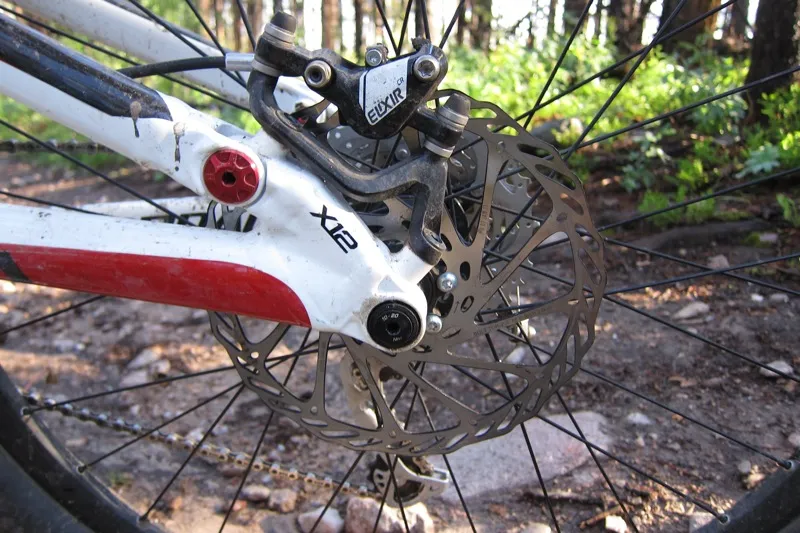
We're huge fans of rear through-axles, but how about a quick-release version, guys?
Finally, while never a structural issue, we seemed to have a new creak come from the frame every couple weeks or so. The headset came loose a couple of times but the seatpost was the main culprit and we ended up adding more and more grease to the seat tube the more we rode the Jekyll. We passed this feedback on to Cannondale, where it was met with surprise. "It's not something that we've typically gotten from that bike at all," said Huseby.
Equipment: Solid parts built into a heavy overall package missing one thing – a dropper post
We never felt that the suspension quality or amount of travel held the Jekyll 3 back. We never felt the tires, wheels or frame held it back either. In fact, one of the resounding traits of the Jekyll is just how well the bike is tuned as a complete package. As it sits, there isn’t one component or feature that outdoes another – they all work together almost perfectly.
Take, for example, the Fox TALAS 32 150mm RL fork. It’s stiffer than experience has led us to expect due to the 1.5in steerer, falling somewhere in between Fox’s tapered 32 series and 36 forks. It also matches the rear of the bike almost perfectly; it's not too much or too little, whereas we'd likely be left wanting with the standard tapered 32, yet on the other hand, a 36 would remain underutilized by most Jekyll riders.
Cannondale have gone a step further, with a special tune of the open-bath fork’s lockout. Rather than complete lockout, the circuit offers a heavily damped feel that matches the rear 'elevate' mode perfectly, Cannondale call it CLT (Custom Lockout Tune). We test many bikes here at BikeRadar and this level of detail and tuning really excites us, so we have to say, bravo Cannondale for this detail; the tuning is something we're happy to trade for the FIT cartridge.
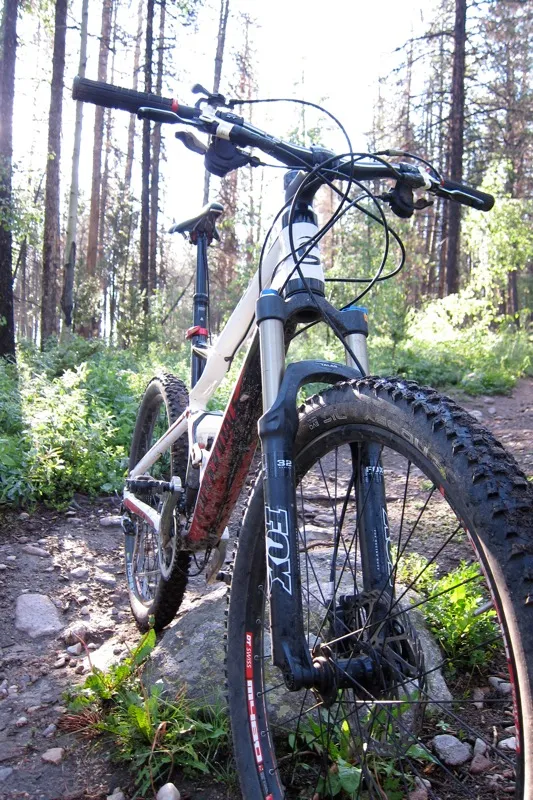
Fox's 32 TALAS with custom tuned RL lockout damper and 1.5in straight steerer tube
Even though the Jekyll rides really well, it's quite portly – well over 30lb without a dropper post or pedals. The Formula/DT Swiss wheels with big 2.4in Schwalbe Nobby Nic tires and standard tubes are the biggest burden and while we don’t want to give up the volume or aggressive tread of the Nobby Nics, we'd like an easier option of making them tubeless.
If we were pressed to further pick apart the components' performance we might harp on the 680mm width of the handlebar, or the fact that you have to remove the Shimano XT shifter’s gear indicator windows to better the interface with the Avid Elixir CR brake levers. There's a reason for the narrow bar, though, an obscure law in Australia and Japan that limits handlebar width to 700mm, called ASNZ 2.12.1. Huesby says Cannondale will get around this in 2012 by shipping the Jekyll with two bars – a wider one for the US market and a narrower one for Japan and Australia.
Really, though, everything worked without major flaw during the course of our test, from the Elixir CRs with 185mm rotors front and rear – they sported a very good bleed and performed very well because of it – to the Shimano XT drivetrain and FSA Afterburner BB30 cranks. The one obvious omission is a dropper seatpost – it’s a must have in this category and adds considerable expense to a bike purchase if not included. Giant, Specialized and Trek all include adjustable posts on their top-end trail bikes.
After extensive testing, we can wholeheartedly recommend the Jekyll platform. However, we wouldn't recommend this particular model – to US readers, at least. The problem with the Jekyll 3 is that for just $200 more you can upgrade to the base-level carbon model, the Jekyll 2, which seems like a no-brainer to us just for the frame – saving a couple of pounds will make a tangible difference on the climbs. Delving deeper you'd be downright crazy not to go for the carbon bike, considering that you also get a better, tubeless wheelset (SUN Ringlé’s BlackFlag Expert) with it.
In the UK, the difference in price is a lot greater – £2,999.99 for the Jekyll 3 and £3,699.99 for the 2 – making the alloy bike look better value. This weird pricing will not exist next year when, according to Cannondale's mountain product manager Johs Huesby, the Jekyll range will be reduced to just four models, with about $1,000 difference between each bike. It’s also worth noting that this year's Jekyll models start at $2,999/£2,499.99, with a very trailworthy specification that looks better value than the Jekyll 3's.
